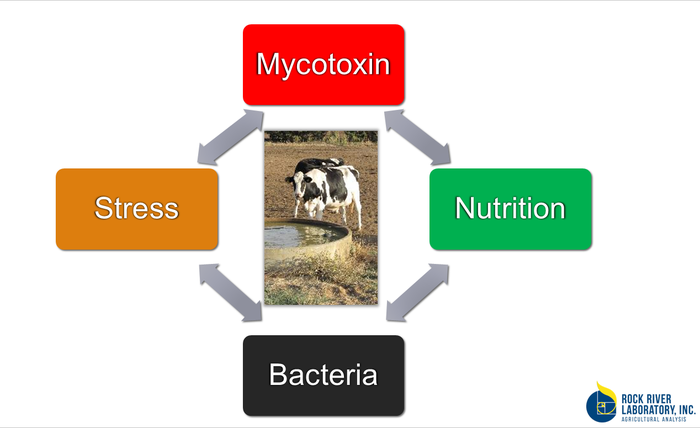Manage variation in forage resources
Take steps now to mitigate and combat risks observed in 2016 forages.
December 21, 2016

The 2016 midwestern and eastern U.S. forage crop is projected to yield greater milk volume (pounds per cow) based on nutrient content and digestibility trends, according to an announcement from Rock River Laboratory.
However, the 2016 corn silage and high-moisture corn harvest brought unexpected challenges for much of the U.S., leading to delayed harvest and plant and grain maturity advancing beyond ideal stages. Further, nutrition-robbing factors are present and becoming a considerable point of discussion now.
“Based on recent support call frequency, many within the dairy industry are not recognizing optimal performance,” said John Goeser, animal nutrition, research and innovation director for Rock River Laboratory. “Many dairy farms seem to be enduring more variation in health, reproductive performance, nutrient digestion and overall dairy performance.”
Goeser explained that, unfortunately, one culprit cannot always be pinpointed as the cause of variation. “Any lessened health and performance is almost always due to multiple factors,” he said. The Figure visually demonstrates multiple insults that can come together to create a perfect storm that depresses animal health and performance.

Causative factors
Historically, mold, yeast and toxin counts have been the industry's focus when evaluating anti-nutritional factors. “Wild yeast has been shown to negatively affect the rumen's ability to metabolize nutrients, while mycotoxins are understood to affect reproductive performance, suppress the immune system, affect the central nervous system and damage the liver, kidneys and gut tissue,” Goeser said.
He added that multiple mycotoxins are always present, and sometimes, they will act synergistically — “similar to being kicked in the shin and the backside at the same time.”
Beyond yeast and mycotoxins, the veterinary and nutrition advisory communities are working collectively to better understand bacterial challenges present on the farm and within feeds. Enterobacteria such as salmonella, Escherichia coli, staphylococcus and clostridium species are just a few of the negative bacteria than can reside in feeds and exert toxic effects on animals.
“A healthy dairy cow can usually fight off harmful bacteria with relative ease,” Goeser said. “However, when other factors or stressors suppress the animal's ability to fight, these bacteria can colonize and exert their harmful effects.”
Clostridium and E. coli have been implicated in hemorrhagic bowel cases, while salmonella can severely affect the nervous system. These bacteria are increasingly identified as the industry strives to fine-tune animal nutrition programs.
Opportunities
While these cases of multiple factors working negatively within the animal can be grim, there are opportunities to defend production and combat these factors.
“If dairy or feedlot health has been challenged with symptoms similar to those discussed and performance is less than expected, consider evaluating bacterial contamination in addition to mold, yeast and mycotoxin concentrations,” Goeser said. “Work to minimize bacterial contamination by keeping equipment and bunks clean and limiting soil contamination.”
He also suggested consulting with trusted veterinary and nutrition advisory teammates, understanding that several factors can synergistically work against animal health and performance.
From a nutrition standpoint, dairy producers and their consultants should work to minimize starch entering the intestine and hind gut. “Excess starch can create favorable gut conditions for mold and bacterial infestation,” Goeser said. “Producers should consider evaluating (total mixed ration) rumen in situ starch digestion to determine if excess starch is passing the rumen (when in situ rumen starch digestion is less than 65% of total starch).”
As the winter brings challenges of its own for midwestern dairy producers, it's still important to monitor all aspects of the daily dairy cow's routine to proactively mitigate risks or combat those challenges if they do spawn bigger concerns with negative results.
You May Also Like



